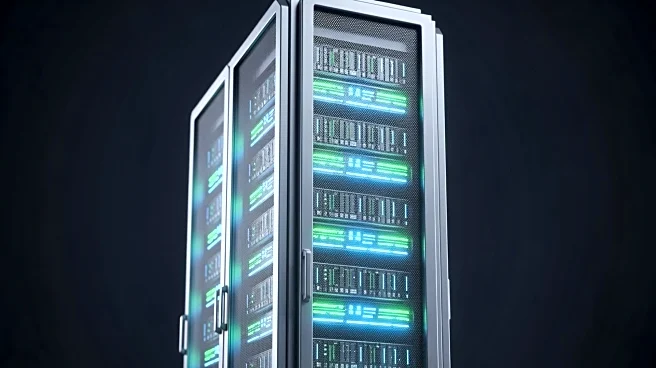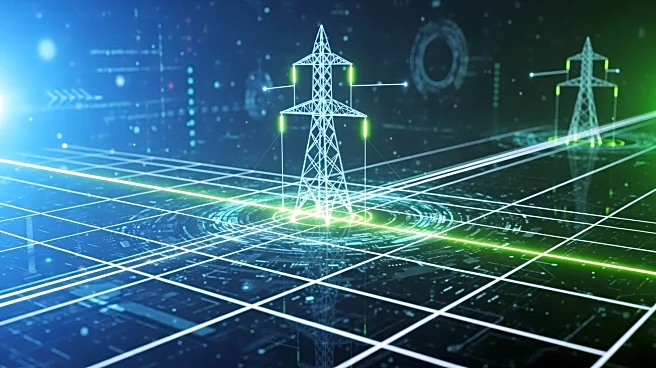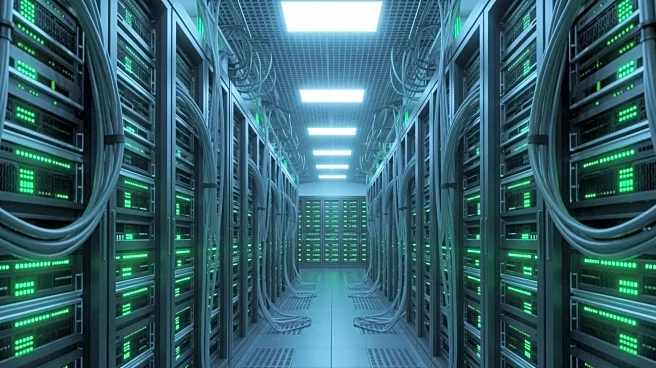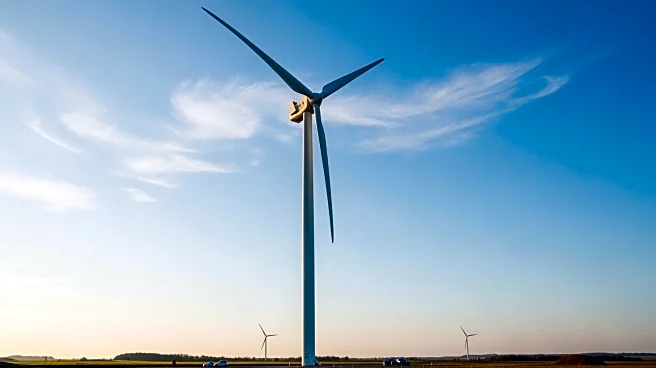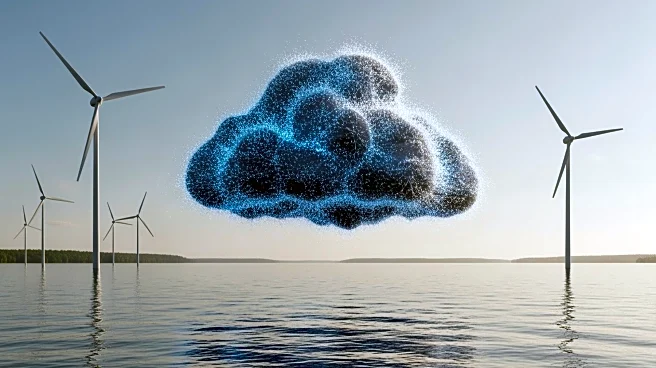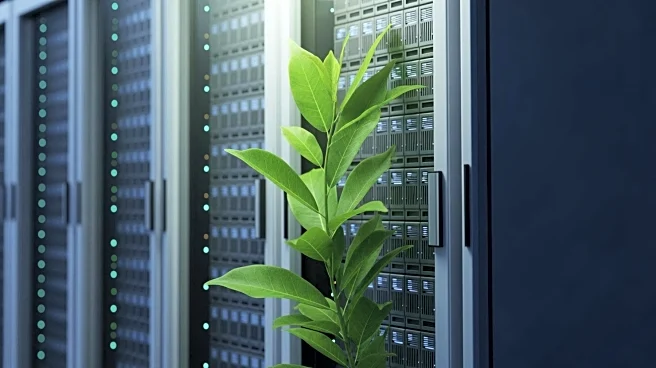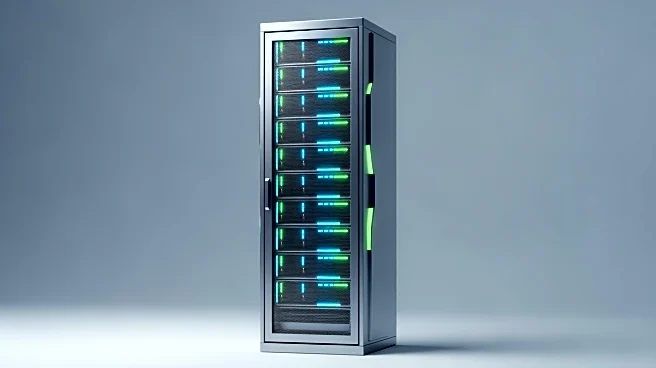What's Happening?
In 2024, U.S. data centers consumed 183 terawatt-hours (TWh) of electricity, accounting for over 4% of the nation's total electricity consumption. This figure is expected to increase by 133% to 426 TWh by 2030,
driven by the rapid expansion of data centers, particularly those optimized for artificial intelligence (AI). These facilities, known as hyperscale data centers, house advanced servers that require significant energy to perform complex calculations. Cooling systems, which prevent server overheating, also contribute substantially to energy use, ranging from 7% to over 30% depending on the facility's efficiency. The growth of data centers is fueled by the increasing demand for digital services and AI capabilities, with new facilities often requiring 100 to 200 megawatts (MW) of power, and some designed to consume several gigawatts (GW).
Why It's Important?
The projected increase in energy consumption by data centers has significant implications for the U.S. energy sector and environmental policy. As data centers expand, they place additional strain on power grids, particularly in regions with high concentrations of these facilities. This could lead to increased electricity costs for consumers and necessitate upgrades to infrastructure. The reliance on natural gas, which currently supplies over 40% of data center electricity, raises concerns about carbon emissions, although there is a push towards integrating more renewable energy sources. The expansion of data centers is also seen as a strategic move to maintain the U.S.'s competitive edge in the global AI race, with potential benefits for economic growth and national security.
What's Next?
As data centers continue to grow, there will likely be increased pressure on lawmakers and utility companies to manage the environmental and economic impacts. This includes potential legislation to mandate renewable energy use and transparency in electricity and water consumption. Additionally, the development of more efficient cooling technologies and energy management systems could mitigate some of the environmental impacts. The federal government and states may continue to offer incentives to attract data center investments, balancing economic benefits with sustainability goals.
Beyond the Headlines
The expansion of data centers raises ethical and environmental questions about resource allocation and sustainability. The significant water usage for cooling systems, particularly in hyperscale facilities, could impact local water resources. Moreover, the concentration of data centers in specific regions may exacerbate regional disparities in energy costs and infrastructure development. As AI technology continues to evolve, the role of data centers in supporting this growth will be a critical area of focus for policymakers and industry leaders.
